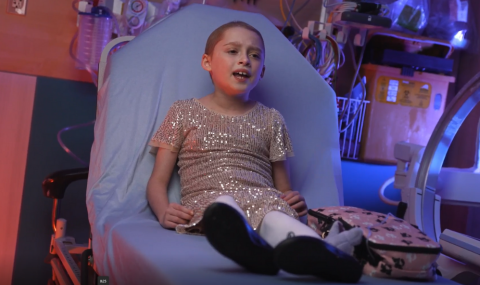At LHSC, delirium care begins with delirium prevention. Our inpatient teams across Medicine, Surgery and Clinical Neurological Sciences follow early and routine screening processes for all patients identified as at-risk for experiencing delirium. Working in partnership with patients, families, and care partners, we are continually improving how we prevent delirium. When prevention isn’t possible, we focus on early interventions to support recovery and reduce the impact on thinking, independence, and function.
What is delirium?
Delirium is a sudden change that causes confusion and uncharacteristic behavior. People may struggle to pay attention to what’s going on around them, and their thinking may not be clear. This can be scary for the person with delirium. It can be frightening and challenging for the people caring for them, as well.
Delirium starts suddenly, can come and go, and may last from hours to days to weeks. Delirium requires prompt medical attention.
Signs of delirium
Someone with delirium may:
- Seem confused
- Say or do things that seem strange, or uncharacteristic for them, or don’t make sense
- Be easily distracted and find it hard to pay attention
- Not know where they are or what time it is
- See or hear things that do not exist (hallucinations, expressing paranoid thoughts)
- Have rapid and unpredictable mood changes (for example, feel restless, upset, worried, easily annoyed, or bothered)
- Forget things that recently happened
- Have trouble staying awake
- Look or act depressed
Risk factors for delirium
Some things can put a person at higher risk for experiencing delirium. They include people who:
- Are 70 years old or older
- Have had delirium in the past
- Have memory or thinking problems (including dementia)
- Are in the hospital for a serious illness
- Are dehydrated
- Have problems seeing or hearing
- Take 5 or more medications
Causes of delirium
Some medical conditions may trigger delirium. These include but aren't limited to:
- Infection
- Side effects of certain medications, or recent change in medications
- Recent surgery
- Chronic illness that’s gotten worse, like kidney or liver disease
- Low or high levels of certain electrolytes in the blood
- Dehydration or not eating enough
- Constipation
- Not being able to urinate
- Severe pain
How we diagnose delirium
On our inpatient units across Medicine, Surgery and Clinical Neurological Sciences, we use a test called the 4-AT to diagnose our patients with delirium. During this test, we ask patients about the “4 A's”:
- Alertness: Ask them what their name or address is
- Attention: Ask them to recite the months of the year or days of the week backwards
- Abbreviated mental test: Ask them their age, date of birth, place (name of hospital), and current year
- Acute change: Ask you whether there’s been a change in their thinking or behaviour
Care partners, family members and other support persons play an important role in preventing and reducing the impacts of delirium. As such, we encourage care partners, family members, and other support persons to monitor for changes in the 4 A's that are outlined in the above "How we diagnose delirium" section.
Staff on the unit can also provide families and care partners with a copy of the Delirium Caregiver Handout, which includes information on what caregivers should know, do, ask, or tell if an older adult is experiencing delirium.
Tell a doctor or nurse if you notice sudden changes in an older adult’s thinking, memory, or personality.
Want to learn more? Use the menu at the top left to explore other sections of the website and find additional resources.



